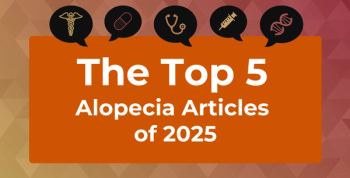
Prediabetes May Not Necessitate Diabetes Development in Older Adults
Prediabetes may not be a robust diagnostic biomarker for predicting future diabetes development in older adults.
Prediabetes may not be a robust diagnostic entity for predicting future
Prevalence of both prediabetes and diabetes increases with age. An estimated 25% of adults 65 years and older have diabetes in the United States, and more than 50% meet the criteria for prediabetes, researchers explained.
Despite these rates, progression of hyperglycemia over time, defined as “the transition from normoglycemia to prediabetes or diabetes or transition from prediabetes to diabetes,” remains poorly characterized in this population.
“The natural history of prediabetes in older adults is inadequately understood,” authors wrote. “Hyperglycemia among older adults is heterogeneous with regard to presentation and outcomes with implications for treatment.” Compounding these challenges, 5 different definitions of prediabetes are currently in clinical use.
To better understand the incidence and progression of prediabetes to diabetes in older populations, investigators compared prevalence of prediabetes based on glycated hemoglobin (A1C) levels, fasting glucose (FG) levels, or both. Using data from adults enrolled in the Atherosclerosis Risk in Communities (ARIC) Study, researchers examined progression from normoglycemia to prediabetes or diabetes and progression from prediabetes to diabetes over a median time of 5 years.
The ARIC study began in 1987 and recruited individuals aged 45 to 64 years. Participants completed clinical visits throughout the course of the study. Visit 5, completed between 2011 and 2013 when individuals were 71 to 90 years old, served as a baseline for the current analysis. The next follow-up visit occurred between 2016 and 2017.
A total of 3412 participants without diagnosed diabetes who attended visit 5 were included in the analysis, of whom 2089 attended visit 6 (915 individuals were alive but did not attend visit 6, and 408 died prior to the visit). To account for dropout or nonparticipation, researchers conducted a sensitivity analysis using an inverse probability of attrition weighing approach.
In the primary analysis, authors used the American Diabetes Association definition for prediabetes “based on A1C levels (5.7%-6.4%) and/or FG levels (100- 125mg/dL).” In addition, they wrote, “We also defined prediabetes as having A1C levels of 5.7% to 6.4% or impaired FG (IFG) criteria or both A1C levels of 5.7% to 6.4% and IFG (confirmatory definition).” During secondary analyses, International Expert Committee (IEC) and World Health Organization (WHO) thresholds for defining prediabetes were used (A1C levels of 6.0% to 6.4% and FG levels of 110 to 126 mg/dL, respectively).
At baseline, mean (SD) participant age was 75.6 (5.2) years. The majority of participants were female (60%) and 17% identified as Black.
Analyses revealed:
- During the follow-up period, there were 156 incident total diabetes cases (118 diagnosed) and 434 deaths.
- 1490 participants (44%) had A1C levels of 5.7% to 6.4%, 1996 (59%) had IFG, 2482 (73%) met the A1C or IFG criteria, and 1004 (29%) met both the A1C and IFG criteria.
- Among participants with A1C levels of 5.7% to 6.4% at baseline, 97 (9%) progressed to diabetes, 148 (13%) regressed to normoglycemia (A1C < 5.7%), and 207 (19%) died.
- Of those with IFG at baseline, 112 (8%) progressed to diabetes, 647 (44%) regressed to normoglycemia (FG, <100 mg/dL), and 236 (16%) died.
- Of those with baseline A1C levels less than 5.7%, 239 (17%) progressed to A1C levels of 5.7% to 6.4% and 41 (3%) developed diabetes.
- Of those with baseline FG levels less than 100 mg/dL, 80 (8%) progressed to IFG (FG, 100-125 mg/dL) and 26 (3%) developed diabetes.
Although prediabetes was common in this cohort of older adults, its prevalence differed substantially based on the definition used, and regression to normoglycemia or death was more frequent than progression to diabetes throughout the study period. Regardless of the definition used, less than 12% of those with prediabetes progressed to diabetes.
“There are several definitions for prediabetes used in current clinical practice and no consensus on which definition is optimal. Depending on the definition, the prevalence of prediabetes in our study ranged from 29% to 73%,” the authors wrote. When adopting international criteria, prevalence was lower at 15% based on the IEC definition and 23% based on the WHO definition.
“Taken as a whole, the current evidence suggests that cardiovascular disease and mortality should be the focus of disease prevention among older adults rather than prediabetes progression, especially in the short term (<7 years),” they said.
Findings also support a focus on lifestyle intervention to improve outcomes in this population. Because such a low risk of diabetes progression was observed in this study, researchers advise against pharmacologic intervention or other aggressive approaches to diabetes prevention in older age. Such interventions could lead to unintended harmful effects including overdiagnosis, anxiety, and implications for insurance coverage.
Because FG and A1C results were reported back to participants, these individuals may have been referred by their health care practitioner or advised on lifestyle modifications at higher rates compared with other populations, marking a limitation to the study.
Reference
Rooney MR, Rawlings AM, Pankow JS, et al. Risk of progression to diabetes among older adults with prediabetes. JAMA Intern Med. Published online February 8, 2021. doi:10.1001/jamainternmed.2020.8774
Newsletter
Stay ahead of policy, cost, and value—subscribe to AJMC for expert insights at the intersection of clinical care and health economics.








































